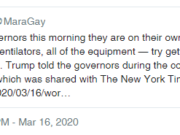If Amy Wax weren’t a tenured law professor, she would have been fired long ago. Since the University of Pennsylvania can’t fire her, the left won’t be happy until its diversity posse lynches that law professor.
What’s her crime?
The charges are straightforward, and they are unforgivable. In today’s America, white people have no right to speak on race issues unless it is to toe-the-line that America is a racist, oppressive society.
Almost no one has asked if Professor Wax’s observation is statistically or historically true, and if so, why it might be true. Literally, facts do not matter. Indeed, admitting unqualified students and expecting them to thrive, no matter their color, is the definition if idiocy.
The ABA, the altleft, and academic social engineers have long been pushing certain exceptions to the ABA’s otherwise rock-solid mandate that law schools not admit students they know are unqualified into their institutions. As I outline in my forthcoming book, that consumer protection mandate is always trumped by the political liberalism that permeates the ABA accrediting body.
The Professor Wax story broke when someone discovered a video of an interview the professor gave. The September 2017 interview between Wax and Brown University professor Glenn Loury was one in which Wax said she didn’t think she’d ever seen a black student graduate in the top quarter of the class at Penn Law and “rarely, rarely in the top half.”
“I can think of one or two students who’ve graduated in the top half of my required first-year course,” she said.
According to Philly.com, the professor refused to answer questions about the “controversial remark.” “No point,” she wrote in an email. “The law school has the full data and the facts on student performance, I don’t (as I admitted) so the game is rigged. … What else is there to say?”
It is axiomatic that if the professor has grossly misrepresented the facts, she should certainly be made to explain why and for what purpose. Indeed, any administrative action against her should focus solely on the veracity of her statement, and not on the idea that it is offensive even if true.
This much is true … the University does have those data. Indeed, every law school can produce those data in a heartbeat. So, her statement is either correct or incorrect. No one seems to care if the statement is true, and most people proceed from the position that it is both wrong, and even if it is not wrong, it is racist and insensitive to discuss the issue.
In my forthcoming book on higher education, Of Serfs and Lords, I am no advocate of the tenure system. Indeed, I want to burn it to the ground, along with many of the devastatingly ridiculous policies and practices that are putting the interest of the tenured class ahead of students who are fast becoming serfs in a debtor class.
Notwithstanding that critique, I also cover this precise issue of political and cultural liberalism driving policy decisions to create diversity at the expense of students. In fact, I plainly detail how law school accreditors force these “diversity” mandates on law schools even though the very same ABA regulations make plain law schools should not accept students to their program an institution knows cannot be successful.
The issue here is not color.
Indeed, the radical left constantly confuses the emotional, political issue of race with academic reality. Here is what every institution knows about admissions.
Students, irrespective of color, who perform too far outside the academic norms of an admitted class for that institution are going to repeatedly have larger rates of failure, they will graduate lower in their respective classes, and they will more often than their peers fail out. That is particularly true in highly competitive law schools.
The “race” issue come into play because the only lower-performing applicants the ABA forces and mandates that law schools accept come from minority groups.
Quite literally, the hanging posse after Professor Wax wants to punish her for pointing out that these policies of admitting weak students based solely on their color to fill a political agenda hurts those students of color.
Let’s look at UPenn Law School.
It was ranked #7 in America in 2017 by the deeply-flawed but market dominating US News Rankings. That’s out of 200+ accredited American law schools. It is elite, its student profile has numbers that are well inside top decile. In short, to go to this law school, one needs an LSAT in the top 5% of all LSAT-takers and an elite GPA.
YOU MIGHT ALSO LIKE: If the US NEWS Law School Ranking is the Bible … It Needs a New Testament
UPenn’s median LSAT is 169, which is so elite, it is hard to articulate for readers unfamiliar with law admissions. At the top 25% of its admitted class, the LSAT is 170. At the bottom 25%, the LSAT is 163. Make no mistake, there is a remarkable difference academically between those two numbers. If an applicant is outside that range, that is, below the low end of that range, the applicant is going to struggle competing with the other better credentialed admitted students … as a general rule.
Those who struggle won’t do so because of their color. They will struggle because people operating at a 170 LSAT level, with a great GPA and proven accomplishment from elite undergraduate programs, are simply too far out in front intellectually, as a general rule, than people who might have a 157 LSAT and a solid GPA from a not-so-elite institution.
Every single piece of datum law schools collect proves out this statistical truth.
What these numbers show repeatedly is that with rare exception, students outside a given institution’s low-end range will not compete well against the other students. I have taught elite law students, and there is a sharp difference between the top of the food chain and those not at the top. The further down the academic food chain one goes, the starker the difference in reasoning and writing.
What law schools don’t show you is how low they will go to admit students who fit non-academic, social-engineering initiatives and policies … either their own or those foisted on them by a partisan ABA.
When I was selecting law schools as a student, I was admitted to Rutgers, Newark among many others. I had a strong GPA and decent LSAT, nowhere near UPenn’s current numbers. Rutgers was an in-state school for me, so I visited the admitted student open house to find out more. I quickly decided it was not for me. However, I will never forget when an admissions representative stood before the orientation group and told us this,
“The thing we are most proud of here at Rutgers is our 33%, set-aside, minority admissions program. What does that mean? It means that to achieve diversity, we set aside 33% of the seats for students who don’t otherwise meet our high admission criteria.”
Those words have been burned into my brain for 22 years, and if that quote is off by one word, it’s an article and not one of the magic buzz words. I was shocked at the honesty, and I was horrified by the policy. I sold my house and moved to DC.
Years later I wound up in a law school administration where I dealt with these exact issues. As the Dean for Management and Planning I had access to these admission data and to the pressures and expectations of ABA accreditors for law schools to “drop down” and take admits of color who, but for their color, would not ever be considered for admission. EVER.
The pool of law candidates remains very low after nearly 9 years of tough times in the industry. Applicant pools are thin, and the number of kids with UPenn numbers are very small, most of them all fighting and deciding between top 10 law schools.
As a subset of the entire applicant pool of all law schools, minority numbers are lower still. Among that very small subset, the number of applicants who qualify to sit inside the 25-75% profile of top 10 schools is too small to fill the need.
YOU MIGHT ALSO LIKE: Harvard Law, the LSAT, the ABA, the Tenure Tax, and Revenue Predators
As I discuss in my book, what the ABA wants schools to do, and what elite institutions do for their own marketing and political agenda, is they admit students who are per se unqualified to fill those seats.
It is not a surprise that many of these under-qualified students struggle.
These admits are almost never white males. I say almost never because out there somewhere is the mythical son or daughter of a business titan who gets admitted. That number isn’t even a rounding error.
I challenge the Dean of UPenn and every top-tier (top 50) law school to release the admission data of all its 2017 admits, matching every LSAT and GPA to race and gender.
I will bet a tenured spot on your faculty against your current salary that 90% of students outside the bottom 25% of your institutions class profile are kids your institution identifies as either minority or disadvantaged. Moreover, the clear majority of those standing more than one full deviation from that bottom will be African-Americans candidates.
Again, crazy racialists will read that and say that I am suggesting that African-Americans can’t be great law students or successful lawyers. That’s dead wrong.
People who do not have great academic profiles can get through a tough law school. They may finish poorly, and they may still emerge one day as hugely successful and great lawyers. That goes for people of every color.
However, what our data show is that those outside the profile of a given class will struggle in law school, and in many cases, they will not be as successful in law school or out of it.
I will go a step further in my bet. I will double my bet that those applicants of color who are far outside a given institution’s profile that these deans are admitting in top 10 schools are getting significant scholarships, and in some or most cases, better scholarships than non-minority students with significantly better academic numbers.
Who wants to prove me wrong?
This brings us full circle to professor Wax, left swinging from the tree of political correctness. Maybe Professor Wax spoke imprudently. One might even argue that in this current insane climate of racialism and identity politics, white academics questioning diversity policies ought to just keep quiet.
What a horrible lesson for intellectualism that would be.
At a minimum, however, such academics who challenge the liberal orthodoxy that admitting inferior candidates of color is justified better be 100% correct when they summarize on generalizations related to race and academic performance. Indeed, if Professor Wax’s general recollection doesn’t match the record exactly, you can bet she will be tarred and feathered too when they cut her down from the end of the hangman’s rope.
UPenn says it has a “people of color” student population of 34%. That’s impressive. It doesn’t really tell us how they define that term. Its diversity pamphlet shows a broad range of diverse people, to include ideology and self-selected gender and sexual preference.
If Professor Wax is correct, the University ought to release those data to show it. If she is clearly wrong, and thus foolishly casting an unsupportable stereotype on one select group of minorities, the law school should likewise set out those data.
So far, however, the University has reassigned her to teach upper-level classes to be sensitive to first-year minorities, and it has been dead silent about the veracity of her statements, permitting her to be pilloried for her observation about performance of a single group of students.
No doubt, UPenn doesn’t want to engage in the bigger question I raise here, which asks why it or any other law school is admitting unqualified students of any color into educational settings where the numbers prove they will struggle … and struggle at a price of over $60,000.00 a year.
In the coming month, my new book examining all of the ills of Higher Education will be out … in it, I outline the ABA’s role in pushing law schools to accept underqualified students based on a political agenda inconsistent with its oversight obligations .
.
Author: Richard Kelsey
Richard Kelsey is the Editor-in-Chief of Committed Conservative.
He is a trial Attorney and author of a #11 best-selling book on Amazon written on higher education, “Of Serfs and Lords: Why College Tuition is Creating a Debtor Class”
Rich is also the author of the new Murder-Mystery series, “The ABC’s of Murder,” book one is titled, “Adultery.”
Rich is a former Assistant Law School Dean and Law Professor. At Mason Law Kelsey conceived of, planned, and brought to fruition Mason’s Center for the Protection of Intellectual Property, known as CPIP, drawing on his expertise as a former CEO of a technology company specializing in combating cyber-fraud.
In 2014 he was elected by the graduating class as the faculty speaker at their graduation.
He is a regular commentator on legal and political issues in print, radio and on TV. Rich has appeared on hundreds of stations as a legal expert or political commentator. He provided the legal analysis for all stages of the Bob McDonnell trial and appeal for numerous outlets including NPR and WMAL.
Rich also writes on occasion for the American Spectator and CNSNews.com.
In his free time, Rich is part of the baseball mafia of Northern Virginia, serving on numerous boards and as a little league and travel baseball coach.
His Twitter handle is @richkelsey.
































